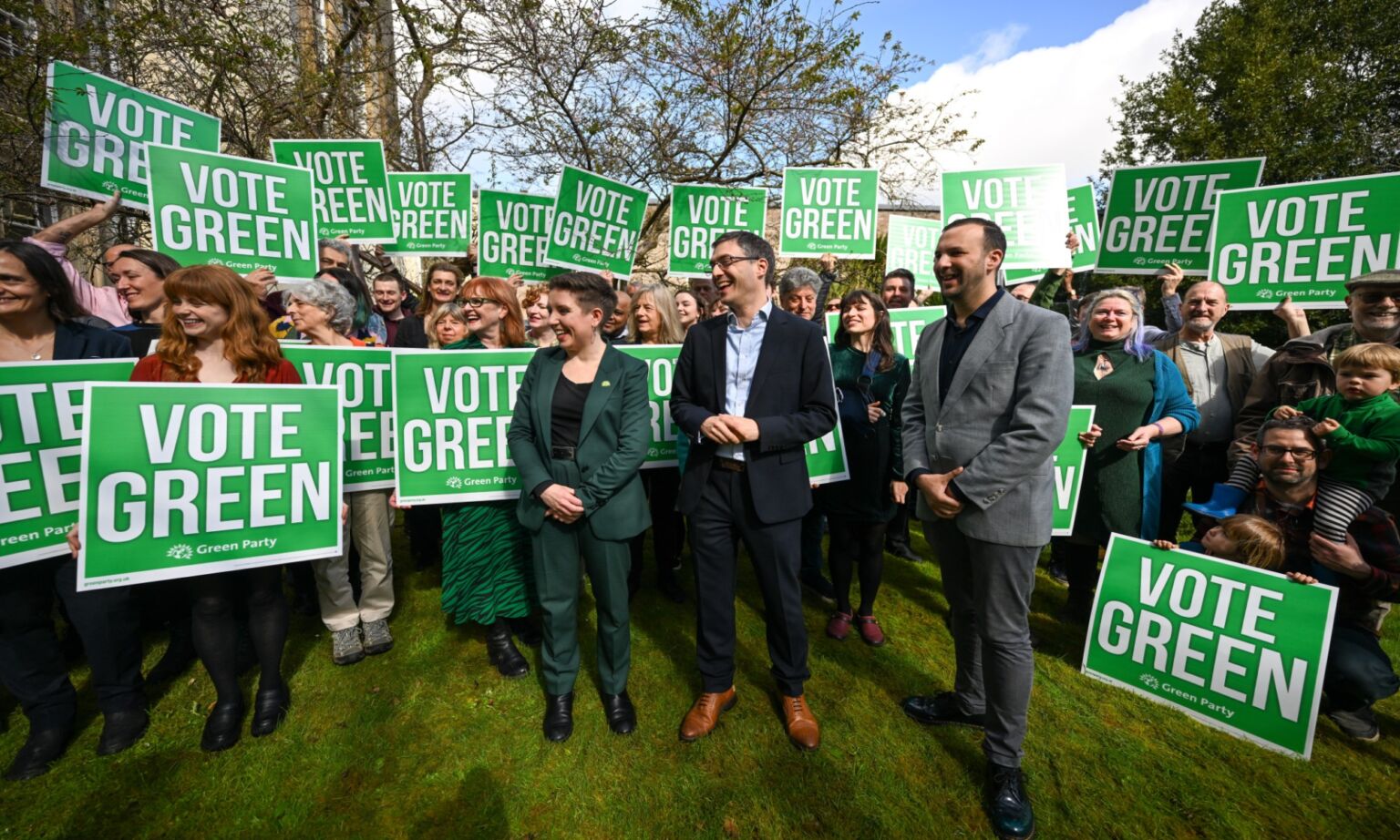
Long-read
The reactionary heart of the Green Party
Why the Greens' dark neo-Malthusian vision resonates with the middle-class Corbynista left.
Want unlimited, ad-free access? Become a spiked supporter.
For excitable left-leaning pundits, the Green Party of England and Wales appears to be morphing into some sort of leftist vanguard before their very eyes.
You can almost see why they think that. For much of the 1970s and 1980s, the Greens were a tiny gathering of fearfully posh conservationists and disillusioned Tories, spiced up with an assortment of conspiracy theory-spouting oddballs. From the 2000s onwards, they became far more respectable. They rang the bell of climate alarmism, while complementing it with the sound of left-of-centre policymaking – aside from pledges to abolish almost all cars, stop banks from issuing electronic credit and legalise membership of al-Qaeda. The Greens were epitomised by their sometime leader and first-ever MP (for Brighton Pavilion), the posh, prissy and unfailingly sanctimonious Caroline Lucas. They were the greener-than-thou wing of Britain’s climate change-obsessed establishment. Popular among self-righteous graduates and NIMBYs, but little noticed by most of us.
Today, however, the Greens seem to be fast becoming the party of Britain’s decadent, upper-middle-class left. It is a transformation that will be accelerated if, as polling suggests, self-styled ‘eco-populist’ Zack Polanski wins the Green Party leadership race this Tuesday.
The signs of the Greens’ transformation were there at the last General Election, when their shrill talk of the climate emergency and general anti-capitalist, big-state shtick struck a minor chord. Picking up four seats on 6.4 per cent of the vote (1,841,888 votes), the Greens had their best-ever performance at a General Election, far surpassing their previous high in 2015, when they won just one seat on a 3.8 per cent vote share (1,111,603 votes).
Their success still partly drew on the Greens’ traditional support base, as their two victories in the relatively affluent, rural and formerly Conservative seats of North Herefordshire (Ellie Chowns) and Waveney Valley (Adam Ramsay) attest. But it did also draw on the Greens’ increasing appeal to the bourgeois left. Not only did Siân Berry win Lucas’s former seat in Brighton, an over-graduated, professional-managerial-class stronghold, Carla Denyer also took the similarly studenty, leftist-packed Bristol West from Labour’s Thangam Debbonaire.
Over the past year, as Labour’s managerialist project has turned sour, the Green Party’s slow-motion transformation appears to have picked up pace. Alongside its increasingly apocalyptic environmentalism, it has embraced every anti-Israel prejudice going; doubled down on its advocacy of gender self-ID, even after the Supreme Court ruling on the biological definition of sex; and promoted a set of leftist economic panaceas, from wealth taxes to a Green New Deal.
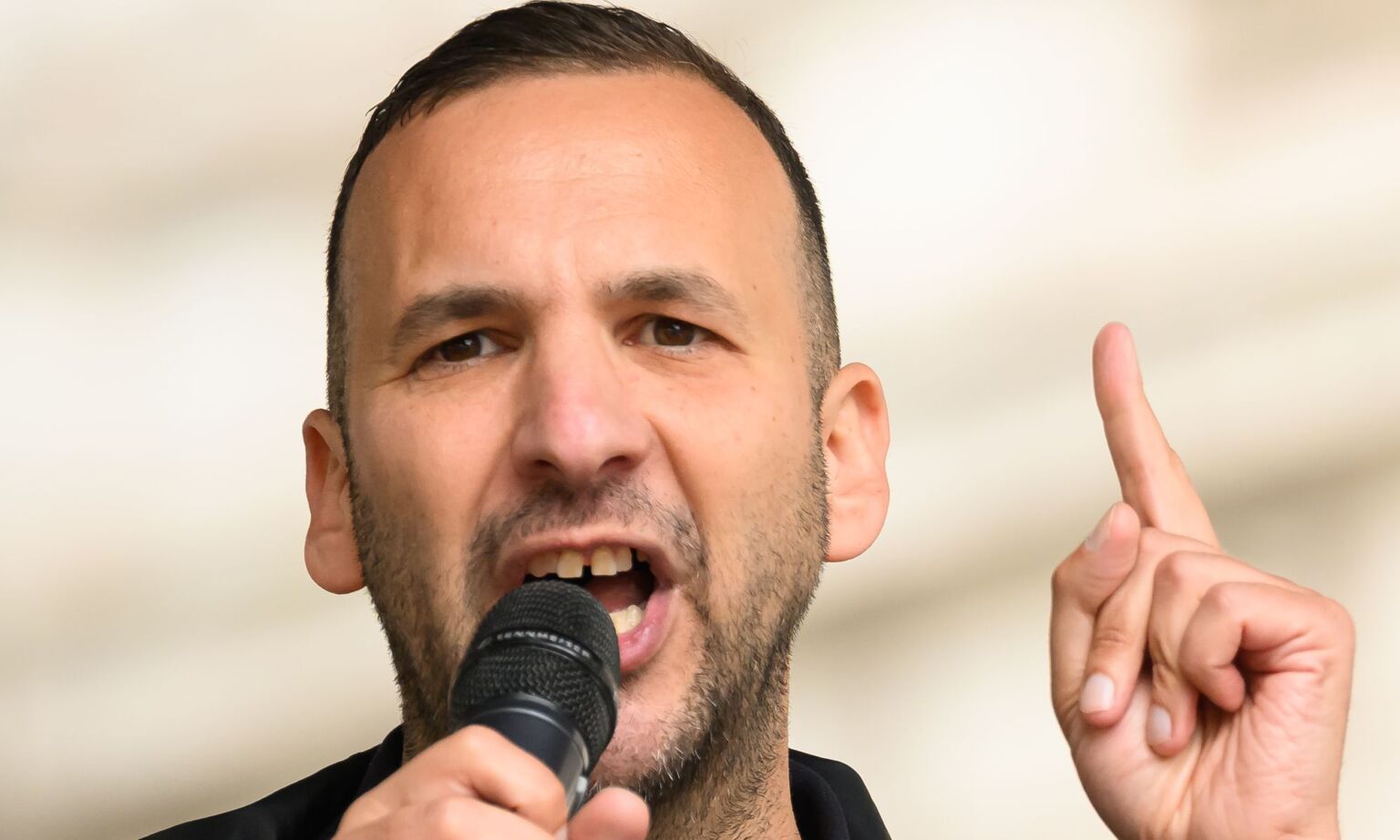
Little wonder some prominent Corbynistas are now looking towards the Green Party as their great red hope. The Guardian’s Owen Jones has repeatedly offered his backing. At the same time, John McDonnell’s former economic adviser, James Meadway, socialist activist Michael Chessum, self-identifying ‘Marxist’ Grace Blakeley and Corbyn-era Labour staffer Matt Zarb-Cousin have all very publicly joined the Green Party – what they lack in intellectual heft, they sure make up for in self-importance.
And now, it seems as if Polanski, potentially the Greens’ next leader, could consolidate the party’s leftist turn. It’s quite a turn for Polanski himself. The now 42-year-old was actually born David Paulden, before reverting to his original Jewish family name when he turned 18. He studied drama first at Aberystwyth University, and then in Atlanta, Georgia, before heading back to the UK to work in London in immersive, therapeutic theatre and live entirely on lentils. His first brush with publicity was not political. It was a 2013 piece in the Sun in which he claimed he could use hypnotherapy to give women bigger boobs.
Three years later, Polanski was expanding his own horizons by becoming a councillor for, er, the Lib Dems. A year later he had joined the Greens and was banging the drum on an Extinction Rebellion protest. In 2021, he was voted in as a Green Party member of the London Assembly, presumably after hypnotising vote counters into thinking he had a larger share of the ballot than he did.
Now, four years on, Polanski is running for Green Party leader as a Corbynista tribute act, talking up wealth taxes and rent controls, while calling Donald Trump a ‘fascist’ and the St George’s flag a symbol of colonialism and empire. He now sounds like he’s straight out of leftist central casting. Polanski is up against two Green MPs, Chowns and Ramsay, who are running as potential co-leaders. They have the backing of the Greens’ more centrist establishment, including Lucas, Green peer Jenny Jones and MEP Molly Scott Cato. But the momentum, not to mention the ‘surge’ in new members, is with Polanski.
Not everyone in and around the Greens is excited by the party becoming an offshoot of Novara Media. One Green Party source has called Polanski’s bid a ‘hostile takeover’ by the far left. Here’s the thing though. There’s little doubt that Polanski has the backing of the Corbynistas and parts of the broader bourgeois left – there are even rumours of a future pact with Jeremy Corbyn and Zarah Sultana’s new leftist party. But it’s really not a takeover by what anyone would traditionally understand as the left. No, what we’re seeing in the Green Party right now is something more interesting and revealing – the coalescence of two radically reactionary tendencies. A coming together of two political factions united by their deeply counter-Enlightenment, anti-Western outlooks. This then is not a takeover or a conquest. It’s a consolidation of the Greens as the party of modern bourgeois reaction.
This is missed by those left-wing political commentators now creaming themselves over the prospect of an ‘eco-populist’ party. This is not just because they still mistake today’s posh, posing identitarians for the old, historical left. More importantly, it’s also because they labour under the illusion that environmentalism is an essentially left-wing outlook. That the Green Party is somehow of the left, forged in class struggle.
This couldn’t be further from the truth. The historical roots of greenism more broadly lie very much on the radical reactionary right. They lie in the reaction against the Enlightenment – the reaction against the social, scientific and technological progress fought for during the 18th and 19th centuries. They lie in the thought of those ideologues who challenged the reformists and revolutionaries of the 18th and 19th centuries pushing for more social and political equality, more democracy, by invoking a mythical natural order. The thought of those, that is, who invoked an ideologically charged notion of nature as a bulwark against change, and claimed there were natural limits to real social and technological progress.
Such ideologues include the likes of the Reverend Thomas Malthus. His Essay on the Principle of Population (1798) in many ways marks the birth of modern environmentalism. Taking aim at the ideas of progress and political equality promoted by the likes of William Godwin in England or the Marquis de Condorcet in France, Malthus falsely claimed that progressive social transformation was limited by and therefore against nature – or, to be more specific, that the self-liberation of the masses, and the material improvements to their lives, would lead to unsustainable population growth. He was effectively trying to naturalise the existing, deeply unequal, undemocratic social order: ‘The principal argument of this essay’, he wrote, ‘only goes to prove the necessity of a class of proprietors, and a class of labourers’.
Throughout the 19th century, one can see time and again how ‘nature’, how ideas of natural limits, of the finitude of natural resources, of the natural social order, were wielded against those fighting for genuine social and political progress. It feeds the development of racial theory, which began life, in the hands of 19th-century French diplomat Arthur de Gobineau, as a defence of domestic class hierarchies. In An Essay on the Inequality of Races (1853-55), Gobineau deepened a by-then familiar reactionary argument that the French nobility were descendants from the old Frankish ruling class, while the rest of the populace were the descendants of subject Gauls. He was claiming that any inequality of station was ordained by nature in the form of noble and lower, mixed races.
From the late 19th century into the 20th century, it continued to be the radically reactionary right who made ideological use of the idea of nature in this way, warping the protests of earlier generations of Romantics. They fetishised the land over and against industrial, urban modernity. They claimed social, material progress was against nature. They also propagated racial thinking and undermined universalist notions of national citizenship – all in the name of different racially defined human stocks. This is why it should come as no surprise that the first political party in the UK to espouse what we would recognise today as environmentalism was not on the left – it was none other than Oswald Mosley’s British Union of Fascists.
The BUF’s 1930 manifesto was called The Land and the People. It took its lead from future Nazi minister Richard Walther Darré’s A New Nobility Based on Blood and Soil (Neuadel aus Blut und Boden), which advocated for the restoration (via eugenics) of the natural connection between a certain people and the land. Likewise, the BUF called for the return of the British to the land, and argued for ‘organicism’, soil health, and state restrictions on chemical fertiliser and pesticides (something Brighton’s Green Party-led council also advocated in the 21st century, leading to overgrown, weed-strewn streets). The BUF claimed this conservative revolution, this turn away from industrial modernity, from liberalism, from democracy, and towards agricultural autarky was the only way to stop Britain from ‘degenerat[ing] slowly into a community of town-bred, under-nourished weaklings, a parasite nation dependent for its very existence upon the charity of international financiers, upon the goodwill and forbearance of other and more virile countries’.
The Land and the People was written by a farmer and environmentalist called Jorian Jenks. After the war, this avowed fascist helped found the Soil Association, and edited its journal, Mother Earth, up until his death in 1963. While it now downplays the role of Jenks in its development, the Soil Association today has a close relationship with, among other people and groups, King Charles III and, of course, the Green Party.
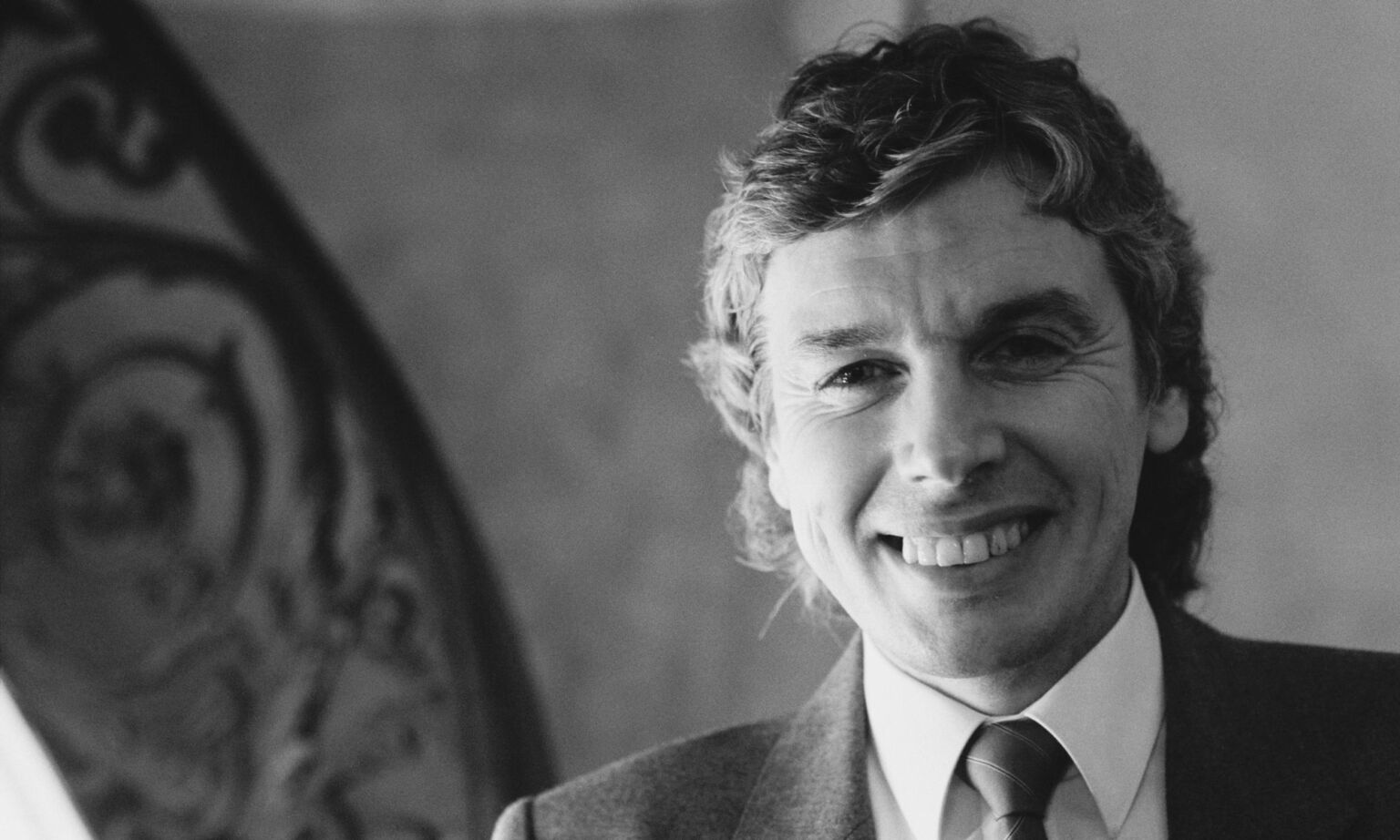
Opposed to many aspects of Enlightenment and modernity, the Green Party is indisputably part of this long, radically reactionary tradition. Its beginnings lie in the Midlands town of Daventry in 1972, when Conservative councillor Tony Whittaker and his wife Lesley met some like-minded types in a pub to discuss an apocalyptic article in Playboy magazine. The article in question was by Paul R Ehrlich, a professor of population studies at Stanford. Ehrlich, like Malthus nearly two centuries earlier, claimed that rapid population growth would lead to famine and social breakdown. Taking Ehrlich at his apocalyptic word, the group of friends soon formed what would later become the Green Party. The neo-Malthusian origins of the Greens were even writ large in the party’s original name: PEOPLE. As Lesley Whittaker reflected in 1993: ‘It was named PEOPLE… People were causing all the problems, people were the only means of finding solutions, and the future of people was the motivation for trying to find such solutions as might exist.’ The solutions, such as they were, centred on reducing the national and global population by 20 per cent, through a large-scale sterilisation programme. The Greens persisted with explicitly advocating population reduction, adopting the Noah-ish jargon of the Earth’s ‘carrying capacity’ and warning of the dangers of ‘overpopulation’, well into the 2000s.
PEOPLE was renamed the Ecology Party a few years later, before becoming the Green Party in 1985. Despite the name changes, its deep counter-Enlightenment, Malthusian roots continue to show, however. Even today, the preamble to the Greens’ ‘philosophical basis’ – the party’s guiding document – insists that ‘it is human activity, more than anything else, which is threatening the environment and, ultimately, threatening the future of life on Earth as we currently know it’. The party’s solution is no longer to explicitly reduce the number of people; it’s to reduce their ability to consume. To lower their living standards, to restrict their movement – to immiserate them.
Given their fundamentally misanthropic offering, it should come as little surprise that for much of the 1970s and 1980s, the Greens were a very marginal presence in public life. They attracted a few old-style, hardline Conservatives, decadent posh leftists and frankly deranged conspiracy theorists. But beyond that, their appeal was limited. Their essentially reactionary, anti-modern, anti-Western outlook had little traction on a political terrain still shaped by the exigencies of class politics and the ideological imperatives of the Cold War.
But by the end of the 1980s, the Greens had an opportunity. The working class’s defeat in the Miners’ Strike in 1985, the growing disorientation of the middle-class left as it cleaved ever closer to an anti-Western cultural politics, and the unpopularity of then prime minister Margaret Thatcher, had shaken up the political scene. And crucially, the right-thinking cause du jour, promoted in schools and across the media, was environmental – to be specific, reducing the hole in the Ozone layer caused by pollutant CFC gases. It was a perfect storm for an anti-establishment environmentalist party. So it was that in the 1989 European Parliament elections, the Greens achieved what is still their best ever electoral result, picking up some 2.3million votes – 15 per cent of the total.
It was a momentary, fleeting success, however. Part of the reason was external. From the 1990s onwards, Britain’s party-political establishment embraced green-ish politics. Indeed, with the end of the Cold War, fighting global warming (later rebranded as climate change) became the closest thing the political class had to an ideological justification, indeed a mission. As a result, it deprived the Greens of a great deal of their raison d’être.
But the Greens had an internal problem, too. Their radically reactionary politics, railing at modernity, appealed to, well, reactionary nuts. Chief among these was David Icke, who by the late 1980s had become the Greens’ main spokesman and de facto leader (they didn’t have actual leaders until 2007).
Like Polanski, Icke had an unusual background. He had been a goalkeeper for third-division Hereford United, before becoming a BBC sports presenter. As a result of his profile, he quickly became the Greens’ public face after joining the party in the late 1980s. He was also clearly an apocalyptic conspiracy theorist, which at the time suited the party down to the ground. In It Doesn’t Have To Be Like This (1990), Icke’s first political book, he claimed that suspicious chemicals had been added to water supplies, talked of the sinister role played by big business and corporations, and claimed our life force had been suppressed by ‘the system’. He also vehemently opposed the building of the Channel Tunnel.
This conspiratorial ‘what are they putting in our water?’ bilge went down well among Greens, reflecting, as it did, their own reactionary prejudices. The problem was that Icke soon had other ideas, too. In 1991, he announced on primetime TV that he was the ‘Son of the Godhead’, and that the world would end in 1997. Soon after that, he revealed that the Archons, an inter-dimensional race of reptilian beings, were using a genetically modified human-reptile hybrid race – the Babylonian Brotherhood – to suppress and terrify humanity, allowing the Archons to feed off the resulting ‘negative energy’. It was, as they say, a theory.
Greens could cope with Icke claiming the world is controlled by evil corporations (a prelude, as it turned out, to Icke’s later full-fat embrace of anti-Semitic conspiracy theories). The Greens were less comfortable with claims that the world was controlled by shape-shifting lizards. Although, tellingly, Icke was still being greeted enthusiastically at Green Party conferences even after he had come out as a messiah.
Overshadowed by Icke’s derangement and undermined by the political mainstreaming of environmentalism, the Greens struggled during the 1990s. The Irish and Scottish wings broke away to form their own parties in the early 1990s. And the Green Party of England and Wales became increasingly irrelevant, picking up just 61,000 votes at the 1997 General Election.
Yet by slowly presenting a more acceptable, less nutty face to the public, they began a quiet political recovery. Caroline Lucas and Jean Lambert became the first Green politicians to be elected to the European Parliament in 1999. And over the next decade or so, they slowly increased their General Election vote share, before Lucas herself became an MP for the first time in 2010. Since then they have continued to pick up support, although there was a slight drop off at the 2017 and 2019 General Elections.

Their re-emergence as a (still minor) force in British party politics from the 2000s up until today, has not been down to some ingenious electoral strategy, or some new inspiring political vision. Rather, the Greens have profited from the increasingly reactionary turn of large parts of our political and cultural establishment, especially on the middle-class left.
That’s why they’re flourishing in places like Brighton and Bristol, dominated by the middle-class-left legions of students and graduates. As this social stratum cleaves ever closer to nihilistic anti-capitalism and anti-Westernism, indeed, as it immerses itself ever deeper in the stream of counter-Enlightenment thinking, it draws ever closer to the long-term reactionaries of the Green Party. The Greens’ dark neo-Malthusian vision of environmental collapse due to ‘unsustainable consumption’, its reactionary invocation of the natural limits to social and material progress, resonates with today’s decadent bourgeois left in ways it rarely has before.
The reactionary exchange goes both ways. In recent years we’ve seen the Greens also embrace the broader identitarianism, culture-warring nihilism and anti-Westernism of the left. Indeed, no other political party has committed itself quite as strongly to the destructive ideology of gender identity as the Green Party has. Its leading figures seemingly view transgenderism as a means to attack the values and outlook of the majority. Even after the UK Supreme Court ruling on the biological definition of woman, leading Greens continued to assert that men can be women if they so choose – disregarding the dangers this poses to women and girls. Green Party members who have challenged trans dogma have been ostracised and expelled. About 25 members are thought to be in this position.
More predictably, given its right-wing, reactionary roots, the Greens have also embraced the middle-class left’s loathing of Israel. A bastion of liberal, democratic modernity, the world’s only Jewish State is therefore everything that the Greens instinctively hate. Little wonder, they are arguably more Israelophobic than any other political party right now, routinely calling Israel’s war with Hamas a ‘genocide’.
This was clear last May, when the Green Party’s Mothin Ali celebrated being voted in as a Leeds City councillor as if he had just landed a blow against Tel Aviv. ‘We will raise the voice of Gaza’, he shouted. ‘We will raise the voice of Palestine. Allahu Akbar!’ Ali’s not alone in his Green-hued hatred of Israel. According to a Times report last year, countless Green MPs have expressed their animosity towards Israel and sympathy for Hamas after the 7 October 2023 pogrom. Adam Pugh, a candidate for Deptford and Lewisham North, took to X on the day of Hamas’s atrocities, tweeting ‘there is no peace without freedom. Resist.’ Kefentse Dennis, candidate for Birmingham’s Perry Barr, praised a ‘pro-Palestine’ demonstration that disrupted a Holocaust remembrance march at Auschwitz, claiming it’s ‘because never again means never again’. And Woking candidate Nataly Anderson wondered if 7 October had been ‘orchestrated’, presumably by Israel. There are plenty more where those came from.
In many ways, it doesn’t matter if Polanski becomes the Greens’ next leader or not. The counter-Enlightenment, anti-Western tendency of the Greens will continue to pull in support from bourgeois reactionaries from across the pseudo-radical left. The affinity between a Green Party, its intellectual roots sunk deep in a radical, right-wing reactionary tradition, and a middle-class left equally set against the Enlightenment and modernity is too strong to be denied. They both now drink from the same rancid trough.
There is no far left takeover of the Green Party. This is a marriage of reactionaries.
Tim Black is associate editor of spiked.
You’ve read 3 free articles this month.
Support spiked and get unlimited access.
Help us hit our 1% target
spiked is funded by readers like you. It’s your generosity that keeps us fearless and independent.
Only 0.1% of our regular readers currently support spiked. If just 1% gave, we could grow our team – and step up the fight for free speech and democracy right when it matters most.
Join today from £5/month (£50/year) and get unlimited, ad-free access, bonus content, exclusive events and more – all while helping to keep spiked saying the unsayable.
Monthly support makes the biggest difference. Thank you.
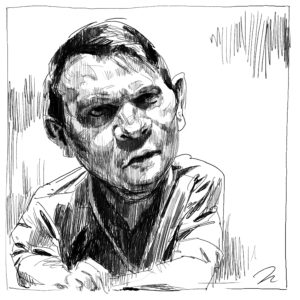

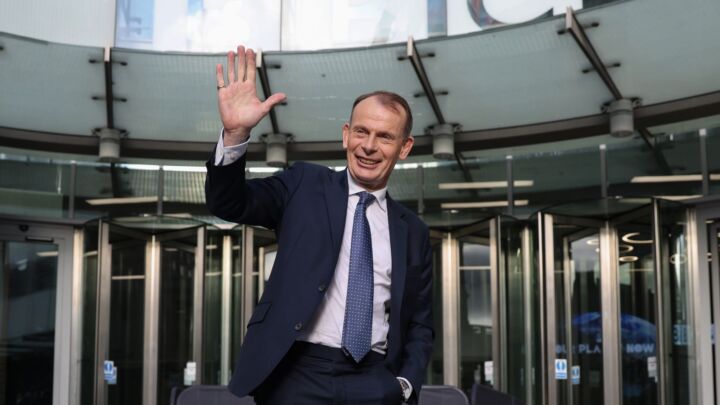

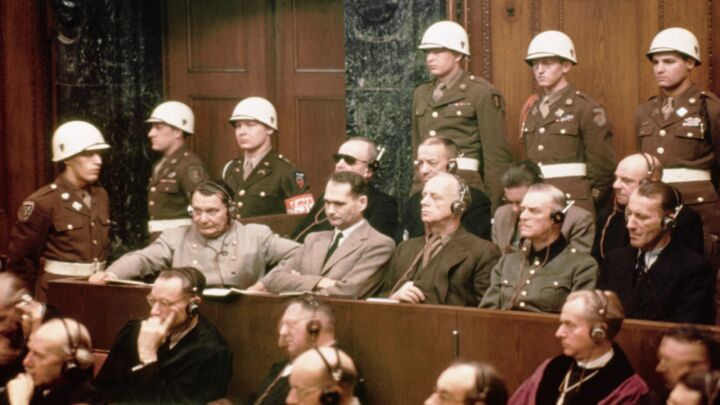

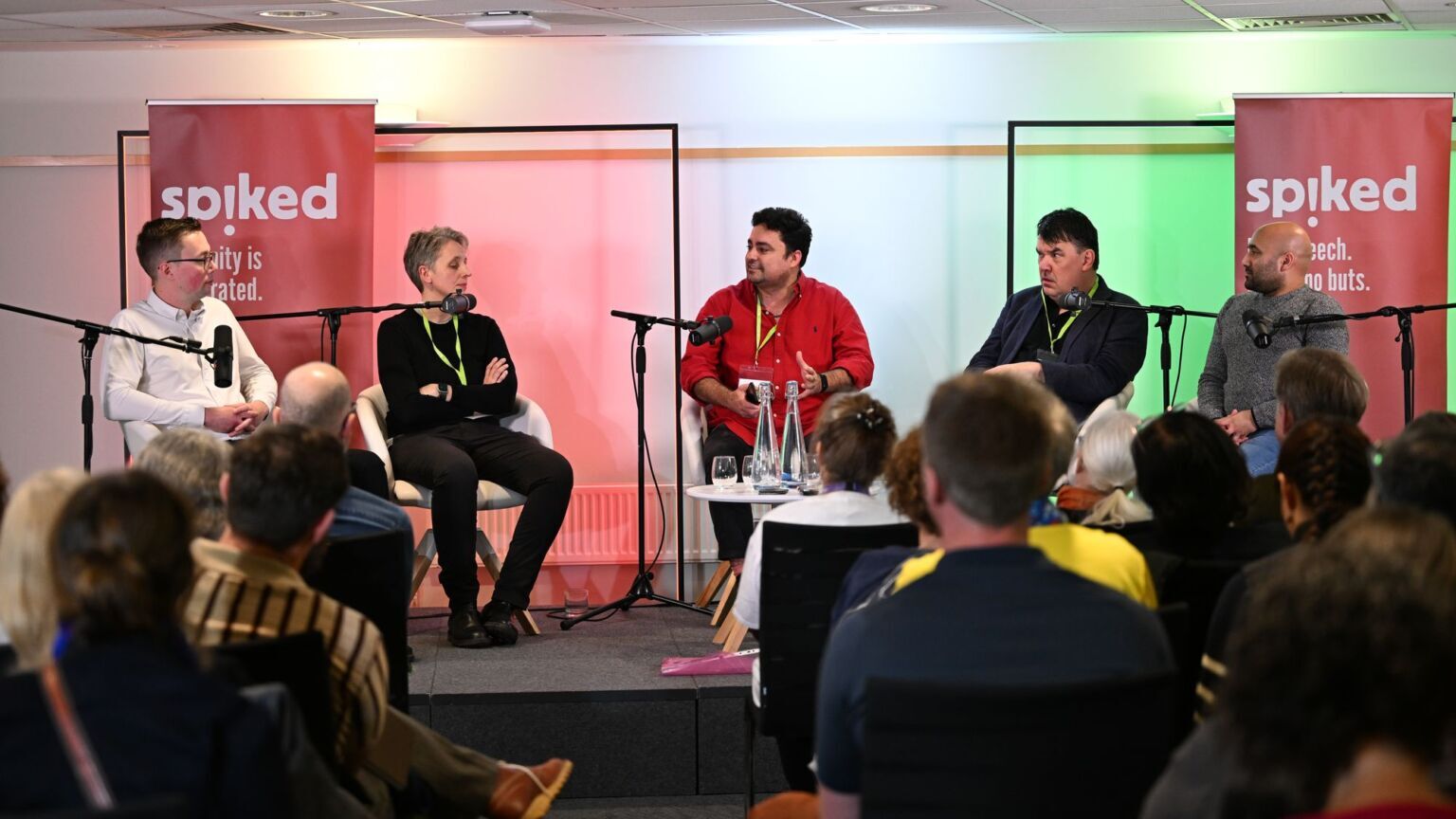
Comments
Want to join the conversation?
Only spiked supporters and patrons, who donate regularly to us, can comment on our articles.